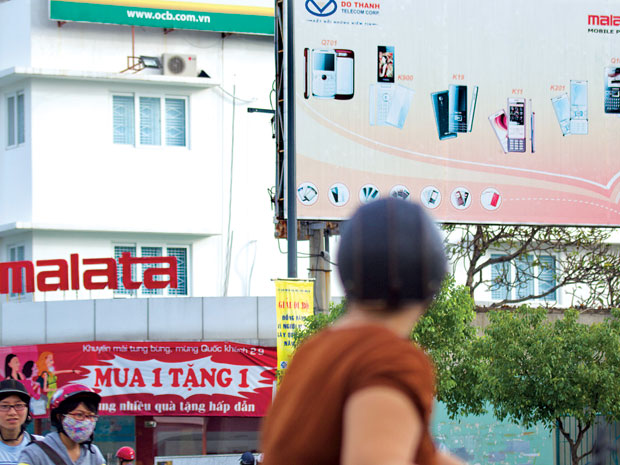
The death of the mobile phone products with Vietnamese brands has been anticipated.
The death of the mobile phone products with Vietnamese brands has been anticipated.
 |
In 2006, the second model of Vietnamese-brand mobile phone – Bavapen - was marketed by Thanh Cong Mobile Company. Since then, a lot of Vietnamese companies have been rushing to develop mobile phone products with Vietnamese brands. They went to China, chose phone parts and had products assembled at Chinese workshops. The products were installed with the software pieces in Vietnamese version and then given Vietnamese brands for sale in the domestic market.
The golden age of Vietnamese-brand mobile phones
The golden age of Vietnamese-brand mobile phones came in 2009 and 2010, when the strong development of the products was really a big threat to other well known brands.
According to the Industry and Trade Information Center under the Ministry of Industry and Trade, Vietnamese brand mobile phones held 15 percent of the market share, while the figure rose to 30 percent in 2010. A lot of Vietnamese brands have become popular, such as Q-Mobile, F-Mobile, MobiStar, Viettel, Avio (Vinaphone), Mobell, Cayon, Malata, and ÉTouch.
Q-Mobile proved to be the most popular Vietnamese brand which held 15 percent of the domestic market in 2010, just after Nokia (53 percent) and Samsung (17 percent).
Statistics show that in 2010, about 15 million mobile phones were imported, including five million products bearing Vietnamese brands. Supposed that the products are priced at 700,000 dong per each, the total revenue of Vietnamese-brand mobile phones was really huge – 3.5 trillion dong.
It is estimated that the average profit is 10-20 percent, after paying taxes and input expenses. As such, Vietnamese mobile phone manufacturers could pocket 175-350 billion dong. Meanwhile, the actual profit of the manufacturers was much higher, because in many cases, the manufacturers set the sale prices double the import prices.
The high profit prompted mobile network operators, including Viettel, MobiFone and VinaPhone, jump on the bandwagon. Selling mobile phone products at low prices, offering preferential service packages, the products launched by network operators attracted a lot of customers. In 2010, the products by the network operators held 10 percent of the market share, about 1-1.5 million products.
The good business made the owners of Vietnamese-brand mobile phones feel optimistic about the future. Nguyen Quang Minh, Director of ABTel, the owner of Q-Mobile, made a statement that the company would export Vietnamese-brand mobile phones.
Too many brands make consumers confused
A lot of manufacturers once incurred the loss of hundreds of billions of dong when trying to fulfill the dream of making Vietnamese-brand mobile phones. However, other enterprises still cherished the hope of develop Vietnamese-brand mobile phones of their own.
Director of an enterprise, which once intended to make Vietnamese-brand mobile phone, noted that 40 Vietnamese mobile phone brands once existed at the same time on the market. China has a lot of mobile phone producers, but the producers mostly do the outsourcing for others, while there are few mobile phone brand owners. Meanwhile, in Vietnam, there are few mobile phone factories, but there are many brand owners.
Analysts believe that even well experienced traders do not know exactly who the owners of the Vietnamese brands are.
In fact, Vietnamese-brand mobile phones once played a very important role in the market. They allowed customers to own mobile phones at low prices, thus helping force the prices of other products down.
However, experts believe that the age of low cost Vietnamese brand mobile phones is over.
(Source: SGTT)




